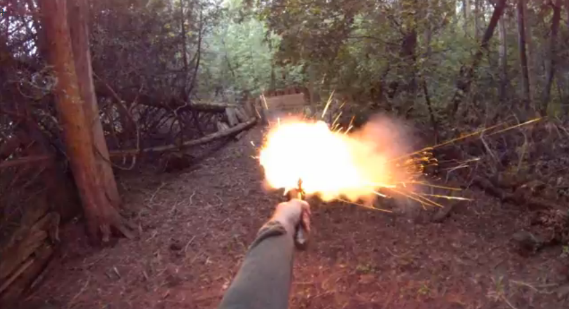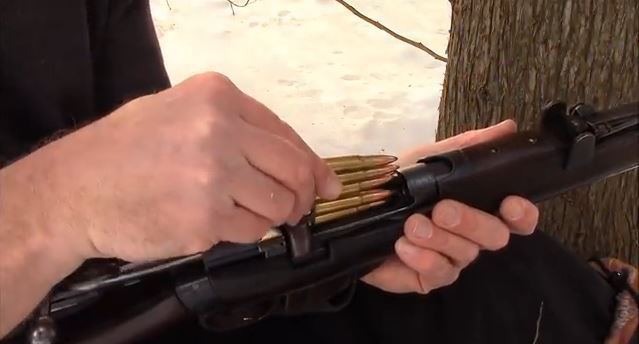Historic firearms
Historic Firearms
Click on images to enlarge
Image of me shooting an 1860s Snider-Enfield rifle, just as Lieutenant Howard does in my novel The Tiger Warrior (photo: Alan Gibbins).
In my novel The Tiger Warrior, Lieutenant John Howard of the Royal Engineers takes aim with a Snider-Enfield rifle in 1879 over the river Godavari in southern India, confronting an uprising of tribal people that has become a full-blown rebellion. The scene on the far bank is one of horror, with captives being bound up for human sacrifice, but Howard must focus all of his attention on his rifle to ensure that his aim is true:
He dropped the cartridge into the breech and pushed it home, then snapped shut the block. He brought the rifle to his shoulder, pointing the muzzle a few inches below his target. With his right thumb he pulled back the hammer to full cock, and he hooked his forefinger around the trigger. He closed his left eye, and raised the muzzle steadily until the foresight was in line with the notch of the backsight. Slowly, almost imperceptibly, he pressed the trigger, without the least motion elsewhere, his eye on the object in his sights. It was a target, nothing more.
c 1805 flintlock Sea Service pistol, with belt hook. For more on this pistol including a video of me shooting it, see here (photo: Alan Gibbins).
A few hours later, after making an extraordinary discovery in a jungle shrine – an ancient artefact that propels the story forward in time to his descendant, Jack Howard, and an archaeological quest like no other – we see Lieutenant Howard breaking out into a hail of gunfire holding an 1851 Colt revolver, a legacy from his father at the time of the Indian Mutiny. And in the final, present-day scenes of the novel Jack Howard repeats the skill of his ancestor, using a vintage Lee-Enfield rifle to take out his worst enemy and bring to an end a quest that had begun in the jungle shrine a hundred and thirty years before.
The Tiger Warrior isn’ t the only one of my novels to feature historic firearms in a pivotal role – in Pharaoh, Major Mayne, another officer on a secret mission, uses a Martini-Henry and then a Sharps rifle to deadly effect over the river Nile at Khartoum, changing the course of history in a way that people brought up on the legend of General Gordon’s last stand against the Mahdi could scarcely have imagined. You can read more about the Martini-Henry and see me shooting it here. All of this reflects a long-standing fascination I’ve had with historic firearms since seeing a War of 1812 re-enactment as a boy, and after my history teacher brought in an original Brown Bess musket like the one in the banner illustration here and allowed me to handle it – possibly the highlight of my entire school career. My first completed ‘book’ when I was a teenager, after an annotated version of the Anglo-Saxon chronicle, was a history of early firearms, hand-written with detailed drawings of all the main lock mechanisms base on hours spent examining originals in collections in Canada and in England.
A 50 calibre flintlock rifle I built myself closely modelled on an actual Pennsylvania rifle of about 1770-80.
I learned to shoot a Lee-Enfield rifle when I was in the Royal Canadian Air Cadets, and I still have a strong interest in the historic Lee-Enfield. My greatest dream as a boy, though, was to shoot black powder from a flintlock ‘Kentucky’ rifle – I was fascinated by the lives of the American frontiersmen of the 18th and early 19th century, especially after I began working on land in Ontario that had first been cleared and settled by American loyalists who had come north after the Revolutionary War. The photo above shows a Pennsylvania rifle based on an original of about 1770 that I built about the time I was writing my second novel Crusader Gold. Since then my interests have expanded to include Afghan jezails, flintlocks of the East India Company and Victorian military longarms, including guns I clean and restore to shooting condition where possible and pass on to museums. You can see some of these in the videos and blogs below.
IMAGES
For more on the Brown Bess musket in the banner, click here. The first three images of me shooting black powder below were taken by my brother Alan, and show, left to right, the 1770 flintlock York rifle pictured above, an 1849 Colt revolver, and a Mark 1 Webley revolver of circa 1890. The fourth photo is an amazing image of my nephew Matthew shooting an 1856 Enfield rifle converted to a smoothbore shotgun - the fast-frame has caught two images in one, seemingly show a see-through of the hammer at the moment of striking the percussion cap. The Malaysian 'Lantaka' cannon in the following images is probably late 18th century and has a one-inch bore. Click to enlarge.













